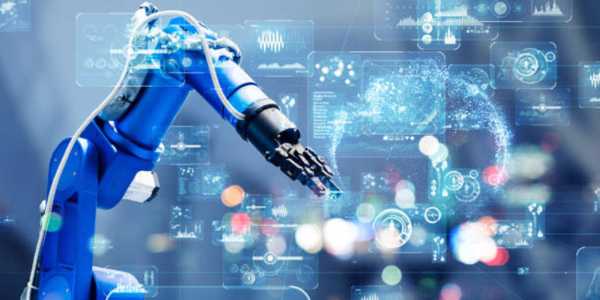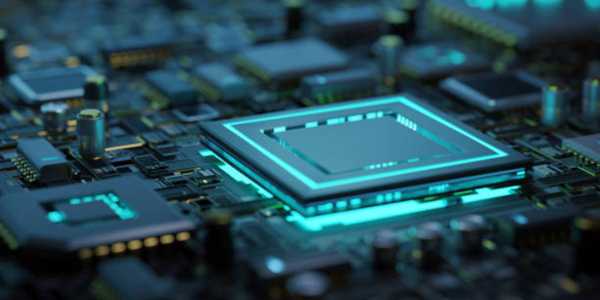How AI is Transforming the Electronics Industry
As one of the most ‘hyped’ industries, the electronics industry has shown great strides of innovations, starting from the earliest-transistor powered electronics to today’s ultra-smart devices.
As one of the most ‘hyped’ industries, the electronics industry has shown great strides of innovations, starting from the earliest-transistor powered electronics to today’s ultra-smart devices. In recent time, a larger focus has been given towards AI, and its impact on design, manufacturing, supply chain, and even customer relations. In this article, we look at how AI is affecting the very foundation of electronics, where traditional methods are being replaced by AI services, the complex prospects of opportunities offered and the challenges that confront us within and post the bounds of the unearthed potential.
New Age Approach to Design And Development
Creating instrumentation design for electronic components was and still is essential, but very tedious in execution when precision is the goal. As such, it involves a lot of tedious manual calculations and multiple time-consuming attempts. Engineers were dependent on data from the past and, through their intuition, developed circuit boards, microprocessors chips, and sensors. In the contemporary world, AI is elevating the task to a whole new level by analyzing data sets in real time to provide optimal designs for the given task.

Envision a case where an engineer has to design a step changer, a mechanism of a specific type microprocessor used in computers. Instead of simulating each possibility in a painstakingly slow manner, AI driven design tools could be employed that can generate, in real time, hundreds of iterations, predict all manner of performance outcomes, and flag issues such as overheating or interference signals. Explorative rapid design shows promise in not only clearing the product development cycle, but also innovative configurations that may be deemed unworthy of consideration.
In addition, AI assists in improving the quality of products. Thanks to machine learning, systems derive knowledge from past successful and unsuccessful designs, and inform which components fit together best. In short, AI operates like a digital coach, helping the engineer expand the limits of what can be accomplished while ensuring dependability.
Changing The Dynamics of Manufacturing Processes
The next important step after finishing a design is manufacturing it. Electronics have always required designating high precision assembly lines, quality control, and preventative maintenance for all other appliances. Although effective, these methods are resource demanding and susceptible to human error.
Now consider AI-powered automation instead. These days, factories utilize intelligent robots capable of not only accurately assembling the product, but also supervising the entire production process in real-time. For instance, AI systems with computer vision can inspect circuit boards during assembly. These systems identify defects that humans would miss. They also change machine settings on the spot to solve the problem which, in turn, improves product quality and reduces recalls.
Another area of particular interest to AI is predictive maintenance. Critical machinery integrates sensors that supply the AI-based algorithms with data to help predict equipment failures prior to breakdowns. Manufacturers are now able to affordably maintain equipment before faults arise, extending the lifespan of costly machinery considerably and significantly reducing downtime. Substantial efficiency gains can be captured as the reduction in downtime results in lower costs and faster operating cycles.
Optimizing Supply Chains and Logistics
AI is transforming supply chain management in the electronics sector far more than design and production processes. Supply chains today are global, highly intricate, and sensitive to shifts in demand and supply. In the past, supply chain managers would depend on manual inventory forecasting and historical data trend analyses for coordinating shipments. The market's rapidly changing nature makes these methods difficult to manage.

This area is changing for the better with more accountable methods thanks to predictive analytics AI. AI can generate accurate assessments of demand of certain components through analysis of historical sales data fused with active market conditions. This predictive ability allows manufacturers to adjust inventory levels, mitigating the risks posed by excess stock and shortages. If, for instance, enhanced demand for a specific semiconductor is predicted, it is imperative for manufacturers to alter their orders and production timelines for timely delivery of products to the market.
In addition, intelligent procurement systems may also evaluate supplier performance and geopolitical risks, suggesting other sources when necessary. This expedites processes, but more importantly, it creates an added layer of defense in the supply chain, which is crucial in the world we live in today.
Improving Customer Engagements
The effects of AI go beyond design, manufacturing, and logistics. Devices consumers use are experiencing a great deal of change as a result of AI. Modern electronics are no longer static objects; they are conversant tools that are integrated into our daily routine, learning our preferred habits.
Let’s consider smart home products. AI algorithms allow your television, thermostat, or even refrigerator to be intelligent enough to learn your lifestyle behaviors. These products can then, over time, take the initiative to alter, for example, energy use settings to offer optimal savings, suggest content tailored to you, and even remind you when it is time for maintenance. Voice assistants like Alexa, Google Assistant, and Siri made it possible to control an entire ecosystem of devices using everyday spoken language, so they have become household names.
AI is propelling the revolution of wearable technology. These electronics include smartwatches and fitness bands, which now analyze data including heart rate, sleep, and activity levels to provide tailored health insights. Through this, they can transform ordinary consumer electronics into critical personal health devices by warning users before serious health issues arise.
AI-powered consumer goods are also boosting the change in mass customization. It now allows companies to provide bespoke products such as smartphones or laptops that use patterns to alter settings, or enable and optimize performance for the most used apps. This greatly increases user satisfaction and loyalty to the brand.
Innovating Challenges and Opportunity
The drawbacks against the advantages are clear, but the use of AI in the electronics industry does face some challenges. A major one would be in the quality and structure of the data themselves. AI algorithms rely on enormous amounts of data to learn, but also to make precise predictions. Inconsistent and badly structured data can create flawed outcomes that affects everything from quality of products to efficiency in the supply chain.
Another challenge rests in the tradeoff between the expense of implementing an AI solution versus the returns on it. For smaller manufacturers, the upfront cost of AI technology can be quite substantial. Once industry-wide acceptance occurs, new technologies should become cheaper due to economies of scale, thus allowing a greater proportion of businesses to take advantage of AI.
There are also security and ethical issues. For instance, as devices get smarter and more connected, protecting user information is critical. Manufacturers should protect against breaches and invest in robust cybersecurity to ensure that the advantages ofAI do not come at the cost of privacy and security.
On the constructive side, what excites us the most is how AI can play a crucial role in enhancing sustainability in the electronics industry. Optimized manufacturing processes and supply chains waste less and reduce the overall carbon emissions from the manufacturing activities. In an economy that values sustainability the most, those benefits are a great reason to adoptAI.

Embracing the Future of Electronics
AI is profoundly changing the electronics sector, simply because it enables the industry to merge technologies and devices. From the core of the schematics design to the retailing of the product, AI accelerates and carefully trims processes that previously were inefficient, highly possible to err, or both. By adopting AI technologies, businesses increase operational productivity and simultaneously create new prospects for innovation and personalization.
With AI enabled systems, the competition has also transformed. Businesses that are successful in using these technologies will lead the next stage of development, where new indicators of the business environment will be revised in terms of quality, reliability, efficiency, and satisfaction of the customers. If challenges like data quality, security, or even the investment needed to begin all AI systems in electronics are rectified, the horizon of electronics and AI will remain undetermined and limitless.